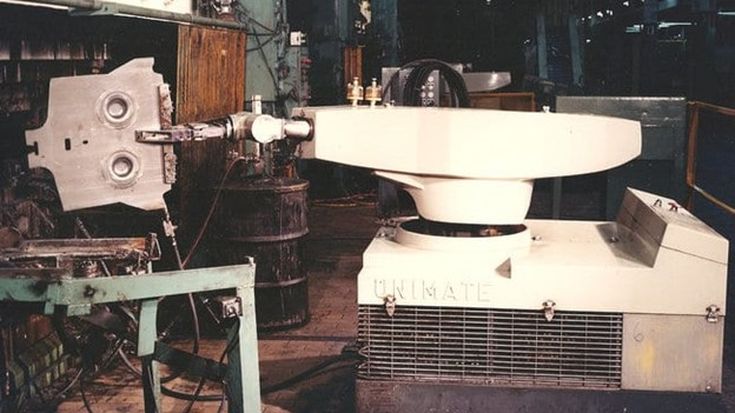The Traditional Approach
With no immediate solution to the manufacturing labor shortfall in sight, the challenge facing companies large and small is to boost productivity and output with the existing manufacturing team. And that’s where robotic automation comes in. While machine tending has been a popular application for decades, the traditional (non-collaborative) robot approach has some limitations that make it impractical in many operations:
- Floor space – safety guarding required by traditional automation consumes large amounts of manufacturing floor space, and may require the re-location of machines, high voltage power lines and other utilities.
- Complexity – traditional robots are difficult to program, operate and maintain. Small shops just don’t have the skilled resources to dedicate to traditional automation, and large shops don’t want the expense.
- Lead times – traditional automation lead times are typically 3-5 months, an eternity for any company fighting labor challenges day to day.
- Limited flexibility – traditional robots are difficult to move to a new location, and to re-program for new parts, limiting the overall efficiency.
- Total cost – given all the above points, machine tending with traditional robots is an expensive investment that is difficult to justify.
Enter the Cobot
Which brings us to collaborative robot (cobot) machine tending. Universal Robots introduced the first cobot in 2008 and has shipped over 75,000 collaborative robots to date. Machine tending was the first application for UR cobots and remains our biggest application segment. Cobot machine tending has significant advantages over traditional robot automation:
Floor space is not an issue. With a proper risk assessment, machine tending cobots can be deployed throughout manual lines with no safety fences, interlocks or barriers. Most installations do not require any relocation of machines, power and other utilities.
UR based cobot machine solutions can be programmed and operated by manufacturing engineers, technicians, and line operators, not robot engineers.
Long lead times are in the past. UR cobot solutions can be in production in weeks, not months. PO to Production in 3 or 4 weeks is common.
Simple programming delivers maximum flexibility. New parts can be programmed in minutes, maximizing flexibility in the world of high-mix, low-volume production.
Total cost is typically 1/3 to ½ that of traditional automation. And with short lead times, UR cobot solutions deliver ROI in record time.
Productivity
Boosting productivity with cobot automation takes multiple forms, but centers on leveraging the company’s skilled manufacturing operators and technicians. The basic configuration involves a 1:1 ratio of cobot to machine. However, depending on takt times and the layout of the machines, a single cobot can support 2 or even 3 machines, with a single operator to keep the cells supplied with parts.
In many companies, the labor shortage has idled machines as there are no operators to load / unload parts. This is a painful scenario, as the lost production volume impacts top line revenue, while the idle machine continues to depreciate, takes up floor space and in the worst case consumes cash flow with interest expenses. Lost productivity also threatens customer relationships with delayed shipments and reduced volumes.
It's also important to remember that even in companies with no labor issues, cobot automation will improve productivity. Manual machine tending means production stops during breaks, lunch, and promptly at the end of shift. Continued operation for two 15-minute breaks and a 30-minute lunch break per day will increase production by 12.5% over an 8-hour shift. In addition, flexible part presenters, machine process monitoring, and tool wear compensation can be utilized to further increase production at the close of normal business hours, often running an unattended second shift.


